Outside the Home
Air pollution is caused by pollutants such as gases, chemicals or airborne particles like dust, ash, mould and pollen. These can be the result of natural events like windstorms, thunder storms, volcanoes or bushfires but more commonly they are caused by human (anthropogenic) activities such as industrial processes and motor vehicles.
While the air quality in Australia is generally considered 'good' by international standards, the leading causes for air quality decline in Australian are attributed to the fossil fuel industry, dust, bush and landscape fires, pollen and motor vehicle exhausts.
Approximately 75 percent of air pollution is from motor vehicle emissions. Unfortunately, Australia has one of the world's most lenient sulphur standards for petrol, allowing 150 parts of sulphur per million.
Inside the Home
Mould is a pollutant that can affect the air we breathe inside our homes.
Mould needs just three things to grow: moisture, a nutrient and a warm environment. This is why cleaning with bleach is just a temporary solution. Once the moisture and heat return, mould starts to grow again and toxic spores begin to multiply very quickly, infecting everything in their surrounds.
Mould will contaminate contents (furniture, clothes, food, paper etc) and the air. These items also act as food for spores, but even worse they are extremely harmful to our health. Approximately 15,000 spores are equivalent to the size of a pin head.
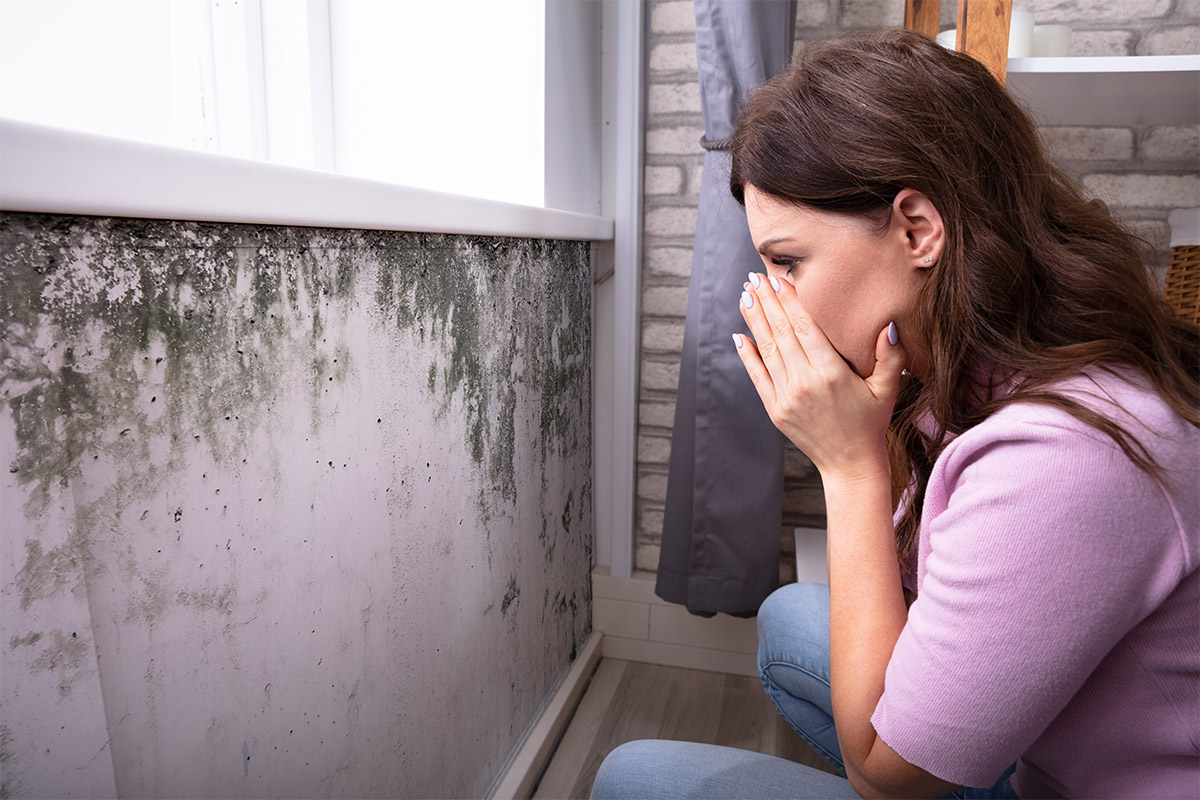
Having an ozone treatment in the home is an effective way to kill mould, bacteria, germs and viruses with lasting results. Ozone removes smoke and pet odours and is far more effective than using a temporary fix such as bleach and chemical formulas.
Ozone is 3000 times stronger than any chlorine (chemical) product. Ozone kills mould on contact, even the loose spores in places you cannot see in the home. If untreated, mould can gradually destroy the surfaces they are growing on, rendering them unusable. If mould removal is not carried out correctly it is also likely to cross contaminate.
Ozone is nature's own purifier. When a thunder storm and lighting strikes or the surf breaks on an ocean beach, we can smell the purity of ozone in the air.
How ozone works......O2 is turned into O3 in a generator and then pumped into the room. The third atom of the O3 gas splits off and attaches to the airborne offending organisms, oxidising and destroying them by breaking them completely down.
Ozone is the strongest commercial sterilant in the world, leaving no toxic residue, reverting back to Oxygen (O2) once treatment has finished.
The Big Picture
While we have some measures at hand to control the quality of air inside our homes, unfortunately inaction by some Governments around the world (including Australia) have exacerbated the following forces that are working against the quality of air we breathe outside our homes.
1. Depletion of Ozone Layer and Global Warming
- Increased emission of chlorofluorocarbons lead to the depletion of the earth's ozone layer which in turn is causing global warming.
The main job of the ozone layer is to keep the earth's temperature regulated by trapping the sunlight from the sun's radiation. - The other objective is to protect us from the harmful radiations of the sun. But the increased emissions of CFCs, bromine, chlorine have led to the depletion of ozone layer.
- CFC's, bromine and chlorine are the main end products of industries and factories. The result of these chemicals being released into the environment is global warming, change in climatic conditions, melting of ice glaciers, increase in sea levels etc.
- Depletion of the ozone layer has also heightened the risk of skin cancer caused by harmful emission of sunlight.
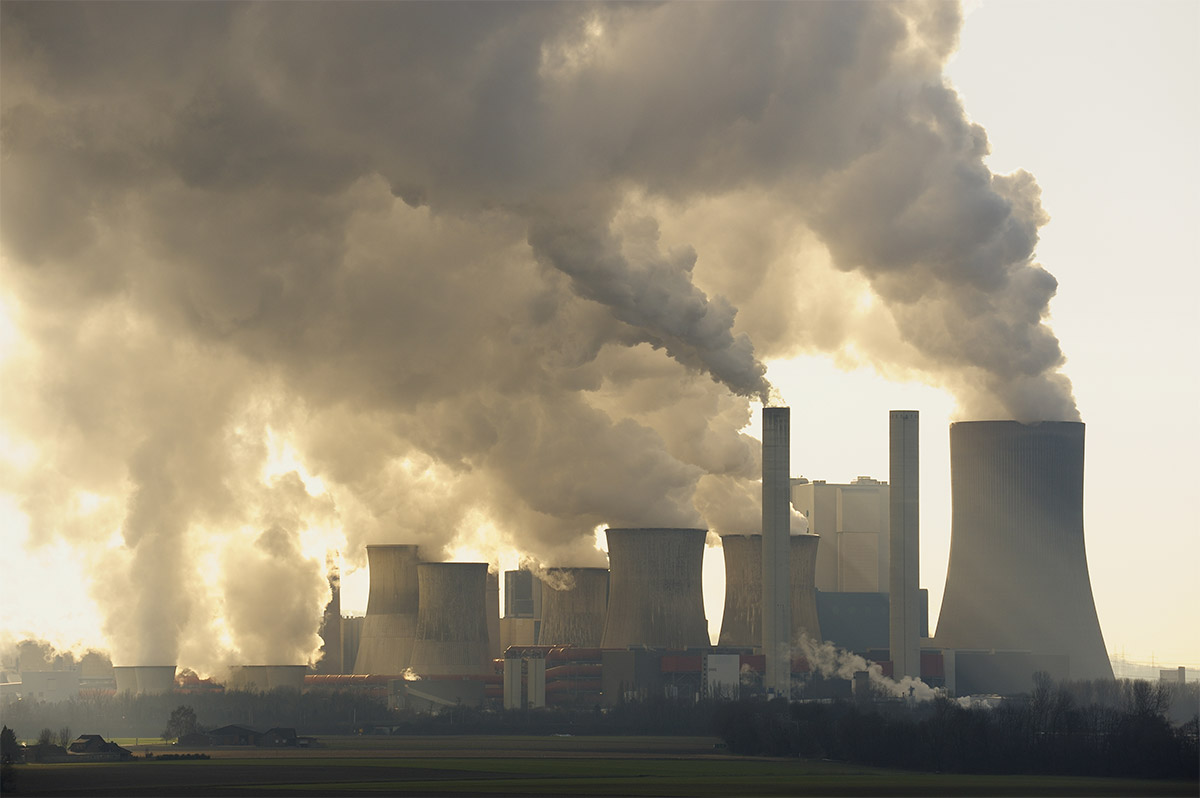
2. Acid Rain
- Sulphur dioxide, nitrogen dioxide, carbon dioxide and other chemicals and pollutants react with water molecules in the atmosphere to generate highly harmful rain called acid rain.
- These pollutants are the end product of various factories, automobiles and industrial or manufacturing plants and activities.
- These harmful end products are often carelessly discharged into the atmosphere leading to air pollution
- The acid rain caused by this air pollution also causes water pollution, affecting water species and the land, thus affecting the natural balance of the soil and degrading the quality and quantity of crops.
The Depth of Air Pollution
The major factors contributing towards the causes of air pollution include:
1. Particulate Matter
Air pollution is characterised by the presence of particulate matter in the air of the atmosphere.
2. Poisonous Gas
Air is also said to be polluted when there is a presence of poisonous gases in the air we breathe.
3. Emission from Vehicles
The vehicle exhaust fumes in cities form the largest source of air pollution.
Carbon monoxide which is the principle bearer of air pollution is emitted from the exhausts of the vehicles.
4. Combustion of Fossil Fuels
Burning of fossil fuel leads to the formation of a poisonous, odourless and colourless gas called carbon monoxide. Carbon monoxide is an extremely harmful gas.
5. Pollution from Air Conditioners
Filters in air conditioners when not changed regularly, combine with air along with dust, mould and other pollutants leading to pollution inside house. This exposes us to breathing air-borne diseases inside our houses.
6. Dust & Dirt
Air pollution from dust and dirt is also a common form of air pollution. Dust lifted by agricultural machinery in fields and land clearing and general demolitions in the construction industry, lifts dirt and dust that becomes airborne leading to air pollution.
7. Household Pollution
Household chemicals used without proper ventilation are a major source of indoor pollution. This type of pollution is especially harmful to infants, children and the elderly.
8. Pollution from Natural Events
Volcanic eruptions, dust storms and bushfires are natural causes of air pollution. However, many droughts and fires around the world that cause air pollution are increasingly being attributed by scientists to global warming and the consequences of climate change caused by human activities.
9. Deforestation
Trees are capable of absorbing many harmful gases such as carbon dioxide, carbon monoxide etc and returning oxygen to the atmosphere. The cutting down of almost two-thirds of the earth's trees and forests over the last two centuries has severely compromised the capacity for these gases to be absorbed by trees. An accumulation of these gases in the earth's atmosphere is causing global warming.
10. Pollution from Industry
The end products of certain industries include harmful gases like carbon monoxide, nitrogen oxide and sulphur dioxide causing hazardous air pollution when they are carelessly excreted into the atmosphere.
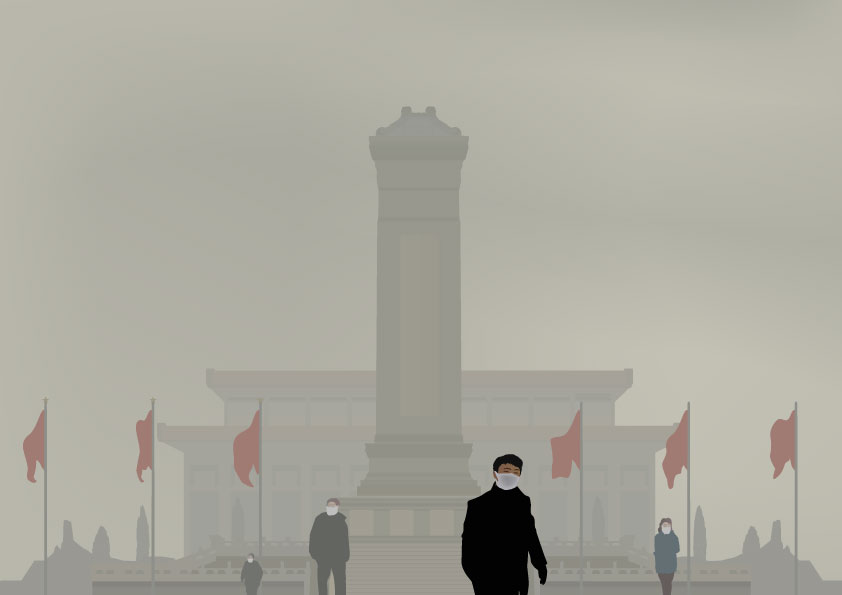
Particulate Matter
Particulate matter (PM) pollution consists of small solids or liquid droplets suspended in the air. When inhaled, some PM can damage the heart and lungs.
Particles less than 10 micrometers (μm) in diameter are a concern for public health because they can be inhaled deep into the lungs.
Very small particles, classified as ultrafine particles or UFPs (100 nanometers or 0.1 μm), and even smaller nanoparticles (less than 100 nanometers) can cause airway inflammation and immunological reactions in the lungs and can travel through the bloodstream to affect other organs.
Refer An investigation of air pollution on the decks of cruise ships
Air Pollution and Health
The Air Quality Index (AQI) tells us how clean or polluted our air is, and what associated health effects might be a concern for us. The AQI focuses on health effects we may experience within a few hours or days after breathing polluted air.
Long-term health effects from air pollution include:
- Respiratory diseases (such as emphysema)
- Cardiovascular damage.
- Fatigue, headaches and anxiety.
- Irritation of the eyes, nose and throat.
- Damage to reproductive organs.
- Harm to the liver, spleen and blood.
- Nervous system damage.
While air pollution can cause long-term damage to people's nerves, brain, kidneys, liver and other organs, some scientists suspect air pollutants also cause birth defects.
Bushfires and Air Pollution
During 2019, bushfires have been burning across Australia, often sending smoke over populated areas.
Apart from the immediate effects of burns and smoke inhalation, bushfire affected communities can suffer other health consequences. Smoke from bushfires can cause serious air pollution, including high levels of particulate matter less than 10 μm (PM10) in size.
Residents of Sydney - Australia's largest city - have endured bushfire smoke for weeks. The city's air quality has exceeded "hazardous" levels on several occasions leading to a 10% rise in hospital admissions.
We don't have to be near a bushfire for our family and pets to suffer smoke-related issues. The first rule of bushfire smoke is to avoid inhaling it as much as possible.
We can be quite a long way from a bushfire and still have it affect our health.
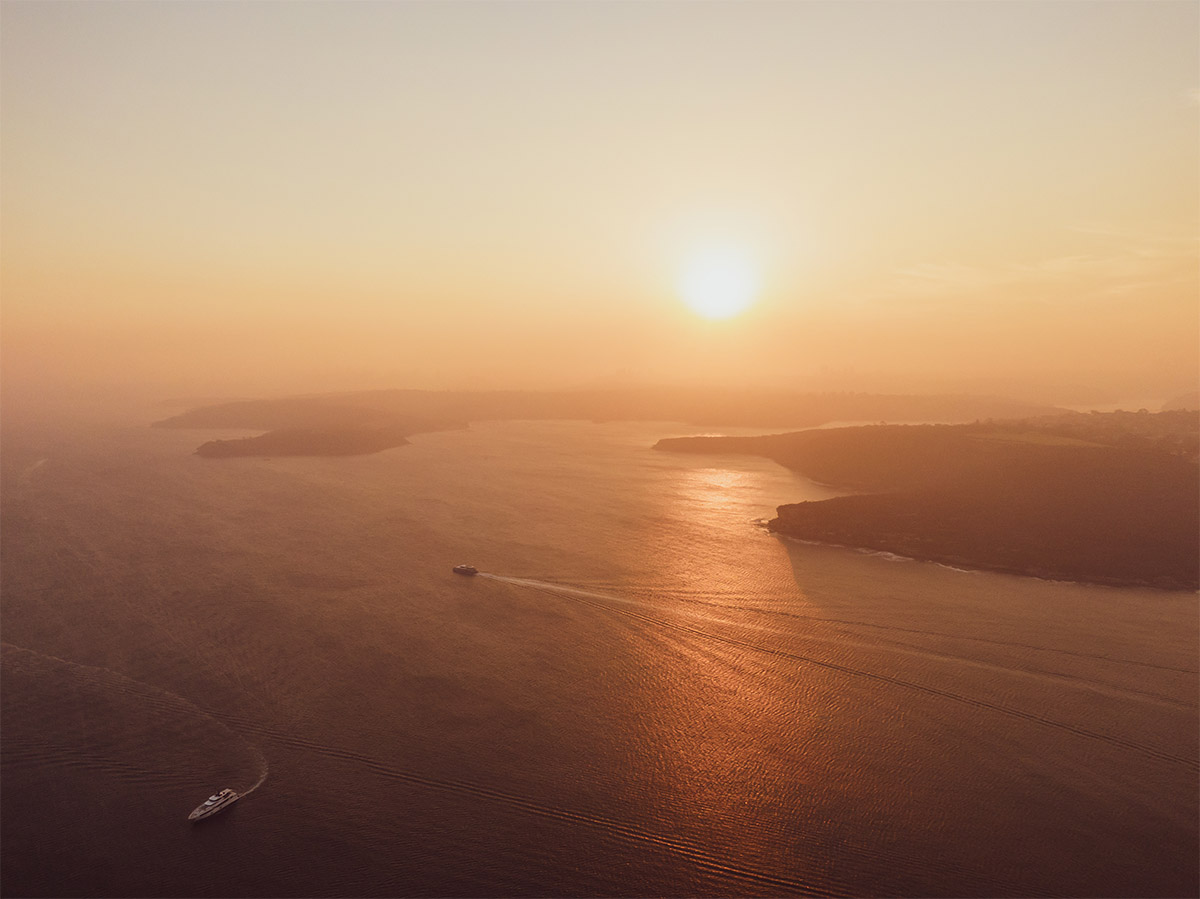
A study on the health effects of fine particulate matter in the atmosphere has shown that exposure to the material is associated with increased hospital admissions for a wider range of medical conditions than are usually blamed on pollution.
And the effects were seen at levels below what the World Health Organisation deems as safe.
Bushfire smoke can cover large areas (hundreds of kilometres). It has the potential to affect millions of people, according to Martine Dennekamp, an adjunct epidemiologist at Monash University.
"Research has shown that air pollution from bushfires is associated with effects on the lungs and the heart,"
Dr Dennekamp said."For example, research in Victoria found a link between out-of-hospital cardiac arrests in Melbourne and bushfire smoke."
These cardiac arrests occurred several hundred kilometres away from where bushfires were burning in the Victorian Alps.
Refer ABC Radio National bushfires air quality and hospital admissions
Bushfire Smoke
Bushfire smoke is a mixture of water vapour, small particles and gases, which may include carbon monoxide, carbon dioxide and nitrogen oxides.
While these gases travel long distances and are known to irritate the respiratory system, evidence suggests it's the particles that are most damaging to people's health, according to NSW Health.
"The smaller and finer the particles, the more damaging they can be because they're able to travel deeper into the lungs", Dr Dennekamp said, with particles smaller than 2.5 micrometres likely to cause the most significant concern.
Symptoms caused by these particles can continue for days after they are inhaled.
https://www.abc.net.au/radionational/programs/healthreport/bushfires-air-quality-and-hospital-admissions/11755840
NSW bushfires: 'apocalyptic' health effects of Sydney's toxic air
By Kate Aubusson and Nigel Gladstone December 14, 2019
Sydney Morning Herald
As Sydney chokes on bushfire smoke, doctors and environmental health experts warn they were flying blind when it came to predicting the long-term effects of breathing toxic air for months over a long, dry and hot summer.
For the past month, hospitals have been inundated with patients struggling to breathe, slow their beating hearts, or calm their consuming anxiety as the smog, ash and refuse of 2.7 million scorched hectares swept the east coast.
When Sydney's air pollution soared to levels 11 times higher than the "hazardous" threshold on Tuesday, NSW emergency departments scrambled to treat 234 patients presenting with asthma and breathing problems – twice the average number for a single day this time of year.
On a normal spring day, fine particle pollution called PM2.5 (pollutants less than 2.5 micrometres wide) average about 20 micrograms per cubic metre. Hazardous levels average at least 200 PM2.5 over 24 hours, safe levels are considered to be about 25.
On Tuesday, the highest hourly readings exceeded 900 on the Bradfield Highway in North Sydney; Macquarie Park hit 610; and Parramatta recorded 559.
Macquarie University Professor Mark Taylor, who focuses on environmental pollution and risks to human health, said bushfire smoke has complex chemistry, which can be carcinogenic even at low concentrations.
"Exposure to particles has a cumulative effect over a lifetime and even if the impact of short-term exposure is minuscule, multiple exposures to high levels of pollutants will have an effect," he said.
"We have never faced anything like this before," Dr Hunter said.
"We're looking at probably four months of poor air quality across NSW and large parts of Queensland that will affect roughly 10 million people, and there are no easy options."
Air quality alert issued for the Gold Coast
Kirstin Payne, Gold Coast Bulletin
November 17, 2019
AN AIR QUALITY alert has been issued by Gold Coast Health this morning due to smoky and hazy conditions on the Glitter strip.
The air quality has decreased overnight with much of the south east corner of the state experiencing slightly higher levels of smoke than what was experienced on Saturday.
The smoke levels still vary across regions but quality on the Gold Coast is currently rated 'very poor' on the state's Air Quality index.
Most at Risk
Those most likely to be most at risk of being affected by bushfire smoke include:
- People with existing heart or lung conditions, such as asthma, chronic obstructive pulmonary disease and chronic bronchitis
- Pregnant women
- Older people
- Young children
Environmental health expert, Fay Johnston, from the University of Tasmania said it was important for all of these people, especially those with heart and lung conditions, to monitor their symptoms when exposed to smoke and for some days after.
Those in high-risk groups are going to feel the effects of bushfire smoke more than the general population.
"If you can see it or smell it then that means there is a significant amount in the air and people in high risk groups would be advised to try and minimise their exposure,"
Dr Johnson said.For instance, people with asthma may experience wheezing, coughing, chest tightness, and difficulty breathing while the smoke is around and for some days after.
Healthy people tend to tolerate being exposed to this type of pollution, although it can cause itchy or burning eyes, throat irritation, runny nose and some coughing. But these symptoms usually pass once the person is no longer exposed to the smoke.
https://www.abc.net.au/radionational/programs/healthreport/bushfires-air-quality-and-hospital-admissions/11755840
11 Tips to Protect Yourself from Unhealthy Air
1. Check daily air pollution forecasts in your area.
2. Avoid exercising outdoors when pollution levels are high.
3. Always avoid exercising near high-traffic areas.
4. Use less energy in your home.
5. Encourage your child's school to reduce exposure to car and bus emissions.
6. Use public transport, walk, bike or carpool.
7. Don't burn wood or waste materials.
8. Use home and car air conditioners in recirculate mode.
9. Continue to use your normal medication and seek medical attention if your symptoms worsen.
10. If air pollution or bushfire smoke continues for some weeks, or if a person's health means they're at higher risk because of smoke exposure, consider staying with friends or relatives outside the smoke-affected area.
11. The NSW Health Department says wearing a P1 or P2 mask (available at hardware stores) properly fitted over your mouth and nose will filter fine particles and minimise the effects of bushfire smoke. They give some protection against smoke particles but are only effective if worn correctly with a good seal around the mouth and nose; they can make it harder to breathe and they do not filter out gases.
Air Pollution and Tourism
Major weather and extreme events around the world have become a challenge for the tourism industry.
During the current bushfires on the east coast of Australia, hospitality operators have reported a 50-75 per cent decline in their regular Sunday trade.
In the approach to the 2019 Christmas Holidays, other tourism operators have reported total cancellations of "waterfront accommodation clientele" who usually book to stay every summer.
Sydney's air pollution and bushfire emergency threatens to choke the tourism industry, with warnings the smoke haze could harm the city's reputation among overseas visitors.
Outdoor attractions are already feeling the effects of sustained poor air quality, and experts suggest tourists may shun Australia during the hotter months because of bushfire risks.
Outdoor tourism ventures have had to close for safety reasons because of the threat of nearby bushfires, while others have reported declines in patronage due to the fires.
The Cleanest and Dirtiest Air in the World
Gurugram, a suburb of the Indian capital New Delhi, is the world's most polluted city, according to Greenpeace and AirVisual, which found it had an average air quality index of 135.8 in 2018 -- almost three times the level which the US Environmental Protection Agency regards as healthy.
Despite its poor media reputation, Beijing was ranked 122 among the most polluted cities in the world in 2018, according to a March report by environmental group Greenpeace and AirVisual's data.
In terms of PM 2.5 pollution — a measure of ultra-fine particulate matter in the air — the country with the world's cleanest air is New Zealand, while the US ranks seventh on that list. Meanwhile, the cleanest cities in the world (in terms of particulate concentrations) are in Sweden.
The top five major cities with the cleanest air in the world:
- Honolulu, Hawaii.
- Halifax, Canada.
- Anchorage, Alaska.
- Auckland, New Zealand.
- Brisbane, Australia.
Some of the Most Polluted Areas in Australian Capital Cities:
- Botany Bay in Sydney.
- Altona in Melbourne.
- Port of Brisbane.
- Parmelia near Perth.
There is a certain irony to Brisbane being feted as one of the five major cities in the world with the cleanest air while only a few kilometres away the Port of Brisbane is reported to be one of the most polluted areas in an Australian capital city.
The common elements these most polluted areas share are Merchant and Cruise Shipping Ports and/or Heavy Vehicle and Trucking movements and/or Petro-Chemical and Gas Industry activities.
The Port of Brisbane contains all three of these industry activities.
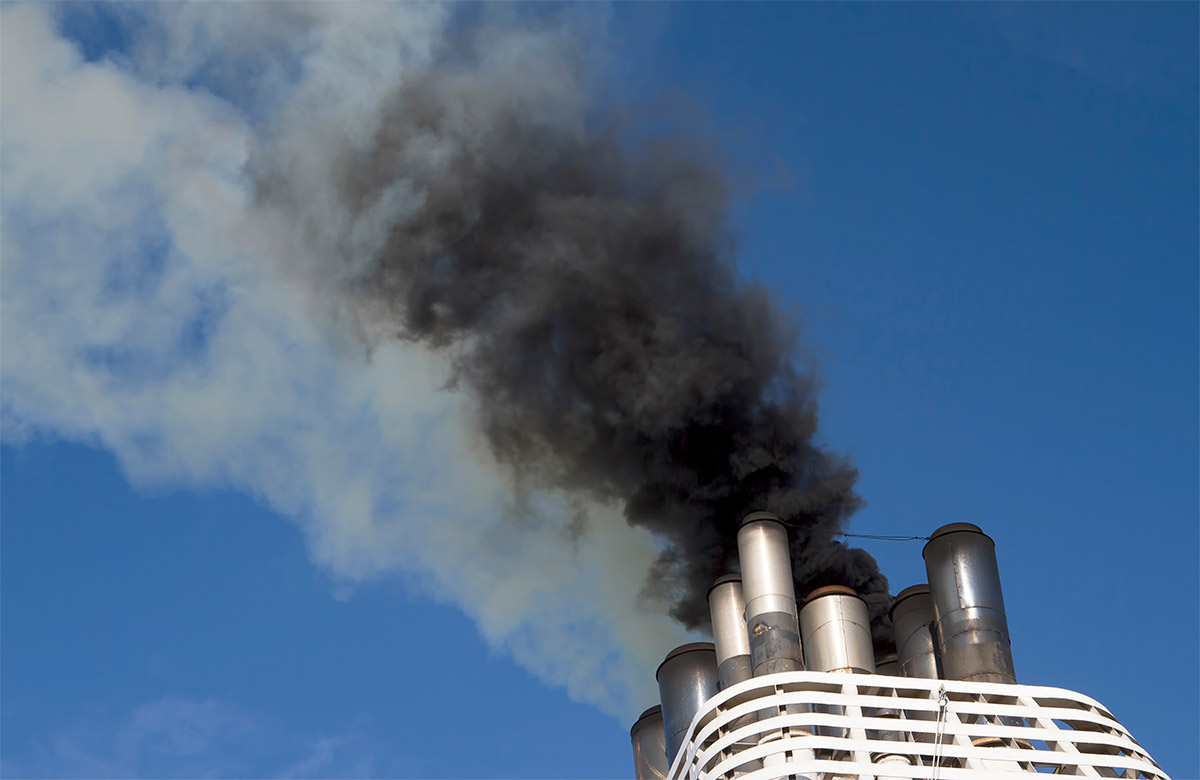
Cruise Ship Pollution
The US EPA estimates that a 3000 person cruise ship generates 210,000 gallons (796,000 litres) of sewage weekly. In 2014, cruise ships dumped more than 1 billion gallons of untreated sewage into the ocean.
Cruise ships generate a number of waste streams that can result in discharges into the marine environment, including sewage, grey-water, hazardous wastes, oily bilge water, ballast water and solid waste. They also emit air pollutants into the air and water.
The high environmental costs of cruise ships pose many environmental concerns from waste disposal issues to toxic paint and the creation of noise that can harm marine life.
The European think-tank organization Transport and Environment, analysed the air pollution caused by 203 luxury cruise ships in European waters in 2017, and found that ships are releasing sulphur dioxide, sulphate and nitrogen oxides at an alarming rate -- airborne gases known to cause lung cancer and acid rain.
Ships owned by Carnival were found to emit 10 times more sulphur oxides alone than all of Europe's 260 million cars.
The European ports most affected by cruise ships are Barcelona (Spain), Palma Mallorca (Spain), Venice (Italy), Civitavecchia (Italy) and Southampton (UK).
carnivals cruise ships pollute more than all of europes cars study
Cruise ships in Sydney Harbour and the Port of Brisbane are allowed to burn low grade bunker fuel that contains sulphur levels up to 3,500 times higher than allowed by Australian cars (already at the highest sulphur levels in the world) and 35 times higher than allowed in cruise ships in North America and many parts of Europe.
The Australian (LNP) Federal Government has overturned a NSW Government decision (banning bunker fuel burning at berth) that now allows bunker fuel to be burned for up to 2 hours at berth in Sydney and while ships transit up and down Sydney Harbour.
Cruise Tourists at Health Risk
Research found 'dangerous' levels of particulate matter
Helen Coffey@LenniCoffey. Independent
Friday 25 January 2019
The decks of cruise ships are as polluted as smog-ridden cities such as Beijing and Santiago, according to a new study.
Research conducted on board four cruise ships over the last two years found levels of particulate matter (PM) – pollution consisting of small solids or liquid droplets suspended in the air – were "comparable to concentrations measured in polluted cities."
The report was conducted on behalf of campaign group Stand.earth by Ryan David Kennedy PhD of Johns Hopkins University, Bloomberg School of Public Health.
"The average PM readings in the stern areas of each ship were significantly higher than the average readings measured fore of the smokestacks (towards the bow)," said Dr Kennedy.
Dr Kennedy used a handheld P-TRAK Ultrafine Particle Counter 8525 to inconspicuously measure PM in three environments on each of the four cruise ships to understand how each ship's exhaust may impact the air quality on deck.
He carried out research on board four Carnival ships: Carnival Liberty sailing from Florida to the Bahamas; Carnival Freedom sailing from Texas to the Caribbean; Holland America MS Amsterdam sailing from Vancouver to Los Angeles; and Princess Cruises Emerald Princess sailing from Los Angeles to Mexico.
Carnival said in a statement: "This particular organisation, for fund raising purposes, is constantly in search of a problem in our industry even if it has to create fake tests that really have no scientific basis."
refer pollution levels on cruise ship decks
SOS and the Beach
Since 1986, concerned residents on the Gold Coast, Queensland, Australia have been protecting their pristine surf beaches and river estuaries, world-class inshore dive, boating, sailing and fishing sites and the marine, avian and land based wildlife habitat on the Southport Spit and Broadwater from the threat of the construction of a cruise ship port.
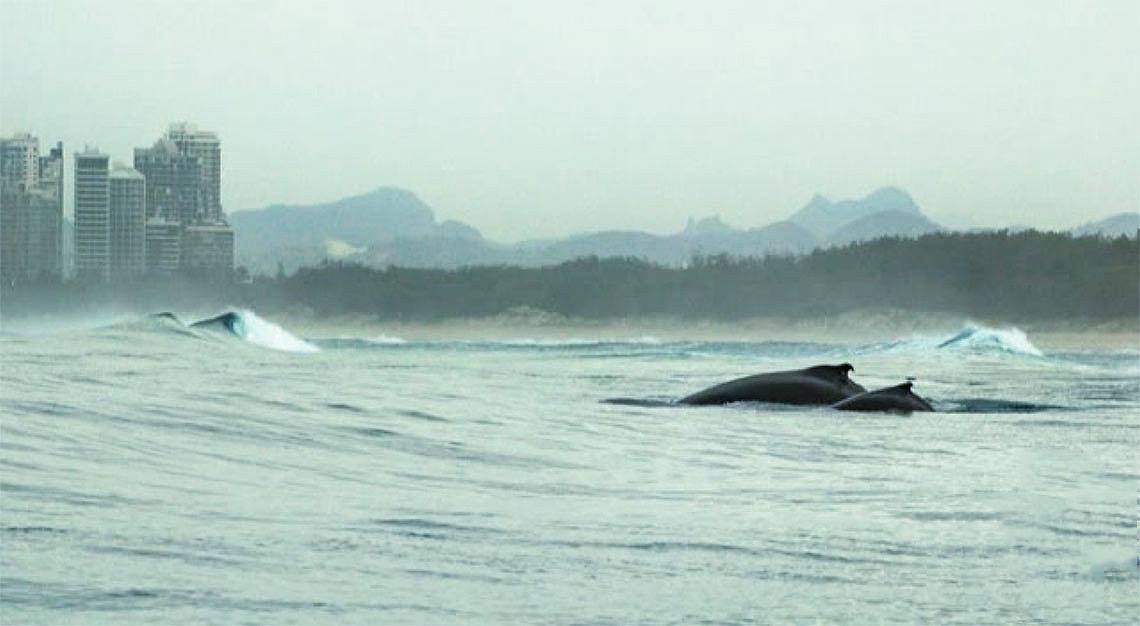 After 13 failed Cruise Terminal attempts this is the latest site and the worst attempt - Philip Park
After 13 failed Cruise Terminal attempts this is the latest site and the worst attempt - Philip Park
Since 2003, a local community action group, Save Our Spit Alliance (SOS), have led the battle to preserve, maintain and improve the Spit and Broadwater, having defeated several government and private developer's attempts to 'build a cruise ship terminal' and in compensation the developer being granted tracts of public beaches, parks, waterways and open space on The Spit and Broadwater for private apartment, casino and other commercial activities.
SOS's research has revealed much of the above information regarding air and water pollution by cruise vessels in addition to the negative impacts on whale migratory paths and resting places and turtle nesting locations that such a proposal would bring. Likewise, their research has shown the unfeasible prospect of safely berthing large vessels at a "Home Port" in the open Pacific Ocean at the end of a one kilometre jetty off one of the most pristine surf beaches on the Gold Coast. The Costa Concordia 'accident' has sent shivers down the 2 remaining international Maritime Insurers who understandably take vessel navigational safety very seriously.

The peak tourism industry body, Tourism Australia, recently conducted a survey of over 13,000 international tourists who ranked what appealed to them as the reasons they most wanted to come to Australia.
Australian Beaches were ranked Number 1 for appeal, closely followed by Australian Wildlife, The Great Barrier Reef, Rainforests/Forests and National Parks.
The proposed cruise ship port proposals for the Gold Coast over the past decades have all fallen over owing to their lack of Business and Economic Cases, Construction and Environmental Costs, Navigational Safety Issues and the potential loss and pollution of public beaches for which the Gold Coast is famous.
Gold Coast Cruise Ship Terminal
A Critical Time
Australia is approaching a critical time in its history especially considering this article has focussed predominantly on Air Pollution. This is only one of the Seven Different Types of Pollution that Australia and the rest of the World are currently encountering through a combination of natural events and human actions (and inaction). The "Significant Seven" are:
- Water Pollution.
- Air Pollution.
- Soil Pollution.
- Thermal Pollution.
- Radioactive Pollution.
- Noise Pollution.
- Light Pollution.
7 different types pollution explained
As a Nation, we have a lot of work to do and a huge responsibility to future generations to take direct action and implement strategies and Government policies to both improve and maintain our air quality. Otherwise for the foreseeable but short-lived future, we may continue to live in a haze.
Researched, Compiled, Composed, Edited and Written by Dr Steven Gration - December 2019
Sources and References
https://www.amcozone.com.au/
https://www.stand.earth/sites/default/files/2019-an-investigation-of-air-pollution-on-the-decks-of-4-cruise-ship.pdf
https://www.abc.net.au/radionational/programs/healthreport/bushfires-air-quality-and-hospital-admissions/11755840
By Kate Aubusson and Nigel Gladstone. NSW bushfires: 'apocalyptic' health effects of Sydney's toxic air. Sydney Morning Herald. December 14, 2019
Kirstin Payne. Air quality alert issued for the Gold Coast. Gold Coast Bulletin. November 17, 2019
https://www.fastcompany.com/90359828/carnivals-cruise-ships-pollute-more-than-all-of-europes-cars-study
Helen Coffey@LenniCoffey. Research found 'dangerous' levels of particulate matter. Independent. Friday 25 January 2019
https://www.independent.co.uk/travel/news-and-advice/cruise-ship-air-pollution-desks-beijing-polluted-cancer-carnival-a8745961.html
http://www.saveourspit.com/No_Terminal/news/NewsArticle.jsp?News_ID=294
www.saveourspit.com
https://www.alphaenvironmental.com.au/7-different-types-pollution-explained/
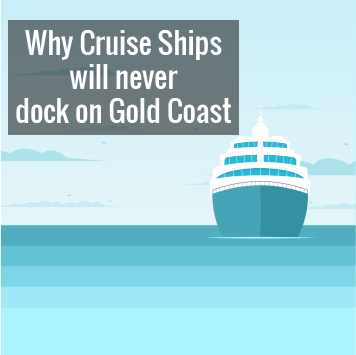 advanced search tips
advanced search tips
Other Articles
Oct 4, 2025 Shock Plans Uncovered for Wavebreak Island »
Nov 22, 2024 Hidden Beach Bar Report exposed »
Jun 17, 2024 Beach Bars - Community Reponse Required »
Jan 22, 2024 The 'forces of darkness' still active »
Jul 27, 2023 Australian Bush Medicine »
Mar 10, 2023 Council & State Attempt to Trash Spit Master Plan »
Dec 24, 2022 Drawing a Line in the Sand (Dunes) »
Mar 21, 2022 Australia's Best Beaches »
Nov 16, 2021 Foreign company given our beach for free »
Oct 14, 2021 Beach Bar Trial - All Splash No Substance »
May 6, 2021 Dunes - Nature's way of defending the coast »
Jun 26, 2020 AGM 2020 »
Jun 3, 2020 Tourism Gold Coast - part 3 »
Jan 14, 2020 Tourism Gold Coast - part 1 »
Jan 13, 2020 Tourism Gold Coast - part 2 »
Dec 4, 2019 Casino Report - Bias, Omission and Error »
Sep 4, 2019 THE DOG who finally caught the car! »
Mar 14, 2019 SOS analysis of draft Spit Master Plan »
Feb 22, 2019 CHINATOWN »
Sep 25, 2018 A Critical Analysis of the Second Casino Licence »
Aug 13, 2018 CST Attempt #15 Tugun Farce »
Aug 11, 2018 New 'Research Queen' to head Destination GC »
May 30, 2018 Regional Excellence Award - Winners »
May 14, 2018 Gold Coast Cruise Ship Terminal »
Apr 24, 2018 The Games are Over »
Jan 27, 2018 Spit Master Plan process has begun »
Dec 18, 2017 Spit Upgrades Launch »
Nov 24, 2017 Developer Donations Buying Favours and Influence »
Nov 22, 2017 Why we cannot trust them with Our Spit »
Nov 14, 2017 Supporting those who support us »
Oct 27, 2017 Bill for CST investigations could reach $12.5m »
Oct 7, 2017 In any other State but Queensland »
Sep 15, 2017 ABC 4 Corners probe GCCC re donations »
Aug 1, 2017 You Won - Spit Casino Cancelled »
Jul 31, 2017 SOSA AGM Monday 7th Aug »
Jul 5, 2017 Feasibility Study Costs »
Jun 6, 2017 Election promises? Not worth a cent! »
May 9, 2017 Silent Minority Exposed »
Apr 27, 2017 Collective Amnesia at CCC Hearing »
Apr 6, 2017 Light Rail loop-hole »
Mar 22, 2017 Consultation Sunday 26th 10:30 am »
Mar 10, 2017 Australian: ASF Financial Viability Woes »
Mar 8, 2017 Big Public Info Night Thurs 9th 6pm »
Feb 26, 2017 Has Lynham done secret deals with Tate? »
Feb 11, 2017 So again nothing new here Tom »
Feb 9, 2017 Survey Does Not Stack Up »
Feb 8, 2017 Warning new group compromised »
Jan 25, 2017 Napkin sketches and a dot point list »
Jan 19, 2017 Have you been consulted? »
Dec 20, 2016 Appealing Attractions - Casino ranked last »
Nov 26, 2016 Four Levels of Corruption »
Oct 8, 2016 A Murky Week in Gold Coast Politics »
Sep 6, 2016 Sunday Mail Casino Debacle »
Aug 27, 2016 Sunland Absurdity »
Aug 19, 2016 AGM Monday 22 6PM »
Jul 29, 2016 The State of Play »
Mar 17, 2016 Change is in the Air »
Feb 4, 2016 Rally in the Park Chevron Is Sunday »
Jan 31, 2016 The Elected Obfuscators Bluff »
Dec 20, 2015 A Christmas Message »
Nov 2, 2015 Peter Garrett re Cruise Ships »
Oct 15, 2015 Last chance to lodge your objection »
Oct 2, 2015 Back to the 1980s »
Sep 5, 2015 Broadwater and Spit Masterplan »
Aug 29, 2015 How to Report Potential Official Misconduct »
Jul 13, 2015 XCAT Farce Paradise Lost and more »
Jun 11, 2015 GCCC under review »
Jun 6, 2015 Another Radical Private Development »
Jun 1, 2015 My fun is more important than yours »
Apr 29, 2015 Economic Fear Campaign »
Mar 26, 2015 Reflections on the Water »
Feb 16, 2015 Project Terminal »
Feb 2, 2015 Election Result Sinks Gold Coast Terminal »
Jan 16, 2015 Tell the Truth - Public Meeting »
Dec 25, 2014 And so this is Christmas »
Dec 24, 2014 Seeney not winning friends on Coast »
Dec 19, 2014 The Numbers don't Lie »
Nov 21, 2014 Save our Spit Photographic and Art Show »
Nov 15, 2014 Senate Inquiry »
Nov 3, 2014 Grand Theft Wavebreak public rally »
Oct 23, 2014 Cronyism Exposed Again »
Oct 6, 2014 Greywater »
Sep 20, 2014 Expert Against Coast CST »
Sep 4, 2014 3 Events to attend »
Aug 30, 2014 Deputy Premiers Announcement »
Aug 23, 2014 The Hidden VDM report »
Jul 26, 2014 Politics and Rumours »
Jun 6, 2014 A call to action »
May 3, 2014 Move over Julia »
Apr 30, 2014 Just suck it up and say NO! »
Apr 25, 2014 That is not consultation »
Apr 8, 2014 Full Page Newspaper Propaganda Ads Begin »
Apr 5, 2014 Report revealed »
Apr 1, 2014 April Fools Day with flawed survey »
Mar 24, 2014 Questions our GC Councillors must ask ASF »
Mar 14, 2014 Hey small spender »
Feb 24, 2014 Surf threatened by CST »
Feb 19, 2014 Tate considers quitting »
Feb 14, 2014 Live blog with Mayor Tom Tate »
Feb 14, 2014 Gration for Mayor 2016 »
Feb 5, 2014 Currumbin under threat from dredging »
Jan 28, 2014 What is a SLAPP Suit? »
Jan 15, 2014 It's a whole of city issue »
Jan 1, 2014 Cowards Lies and China Syndrome »
Dec 30, 2013 North Kirra Cruise Ship Terminal »
Dec 30, 2013 Mick Fanning speaks out on Kirra CST »
Dec 14, 2013 Councillors unaware of Brisbane CST »
Nov 29, 2013 Grand Theft Land »
Nov 16, 2013 The Hidden Urbis Report »
Oct 24, 2013 2013 Gold Coast Media Awards »
Oct 21, 2013 State vs State vs Mate »
Oct 19, 2013 What actually happened at the vote »
Oct 18, 2013 Dear Councillor »
Sep 12, 2013 Ship visits raise concern »
Sep 6, 2013 Vote 1 Save Our Spit »
Aug 24, 2013 Mayor Plays the victim »
Aug 24, 2013 Cruise Industry Forum Cancelled »
Aug 14, 2013 Secret Study values Broadwater at $4.1 b »
Aug 10, 2013 AGM 2012-13 Sep 10 7pm »
Aug 10, 2013 CST Bidder pulls out »
Jun 23, 2013 Cruise Ship Terminal in doubt »
Jun 6, 2013 Q and A info Night »
May 29, 2013 Joel cans Terminal idea »
May 22, 2013 AECgroup Business Case Analysis »
Apr 22, 2013 CMC probe into Oceanway »
Apr 14, 2013 Secret letters and meetings »
Apr 8, 2013 CMC under LNP attack »
Apr 4, 2013 Golden myopia »
Mar 16, 2013 Green Sea Turtle May have paid Price »
Mar 9, 2013 Golden Opportunity Missed »
Mar 6, 2013 Controlled Messaging Fails »
Mar 4, 2013 Open for Business »
Mar 2, 2013 Gambling with our coastline »
Feb 17, 2013 Gold Coast Waterways Authority Appointees »
Feb 9, 2013 Expressions of Interest Broadwater Marine Project »
Feb 2, 2013 Analysis of the navigational report 2012 »
Jan 26, 2013 Survey Called into Question »
Jan 19, 2013 Light Rail court battle with Council »
Dec 18, 2012 Bob Katter makes it a Federal issue »
Dec 18, 2012 Self-interest rather than vision »
Dec 13, 2012 A history lesson »
Dec 13, 2012 Land grab confirmed by report »
Dec 12, 2012 Community Information Session 10AM Thurs 13th »
Dec 6, 2012 Selling off our public land and water! »
Dec 5, 2012 Shoals vital to quality waves at Strad »
Dec 3, 2012 A bad week and month for LNP »
Nov 29, 2012 The unethical removal of Dr Alex Douglas »
Nov 25, 2012 No one voted for this »
Nov 13, 2012 Annastacia stands up for the community »
Nov 10, 2012 Father Son »
Nov 10, 2012 The Younger Generation Get It »
Nov 6, 2012 Rally gets Australia wide attention »
Nov 3, 2012 RIP Angus »
Oct 27, 2012 Ignored Tax and Rate payer »
Oct 27, 2012 Broadwater water quality degrading »
Oct 27, 2012 In Union there is strength »
Oct 20, 2012 Leadership not spin »
Oct 16, 2012 Comparing apples with apples »
Oct 12, 2012 Not the Panacea of Gold Coast Economic Woes »
Oct 8, 2012 Divide and Conquer - Trade Off »
Oct 5, 2012 Dawny lets us down »
Oct 3, 2012 Joel Parkinson - thanks »
Oct 2, 2012 Thanks for the support Occy »
Oct 1, 2012 Free Like Me »
Oct 1, 2012 Gold Coast Bulletin backs the people »
Sep 23, 2012 Sembawang disappears into a puff of logic »
Sep 21, 2012 Thanks for the support Kelly »
Sep 19, 2012 Mick Fanning is a legend »
Sep 11, 2012 Ship Terminal Sembawang Wave Break Survey »
Sep 3, 2012 No support for Sembawang Proposal »
Sep 3, 2012 A letter to the Premier »
Aug 28, 2012 Russ Hinze changed his mind 1980 »
Aug 22, 2012 Facebook saving our spit »
Aug 21, 2012 Is the Spit Man Made? »
Aug 14, 2012 The qu is NOT where but WHY? »
Aug 2, 2012 Lose Kirra or Straddie »
Jul 27, 2012 Hello SGC Business Leaders »
Jul 23, 2012 Cruise Ship Terminal - White Elephant »
Jul 17, 2012 Dear Mr Tate »
Jul 9, 2012 City Backs Terminal - NOT »
Jun 22, 2012 Join Us »
Jun 22, 2012 Public Open Space »
Jun 12, 2012 AGM 2011-12 Thurs 21 June 7 pm »
Jun 8, 2012 Dear Mayor and Councillors »
May 31, 2012 A Casino spitting ships »
Apr 26, 2012 Not printed in the local paper »
Mar 3, 2012 Kelly Slater video helps SOSA »
Feb 22, 2012 Broadwater Community Reference Group »
Jan 16, 2012 Cruise Mishap a reminder to us »
Sep 29, 2011 Broadwater Management Plan »
Jun 11, 2011 AGM 2011 Wed 13th »
Oct 22, 2010 Cruise Ship Tourists may not spend »
Aug 31, 2010 Another Broadwater plan »
Jul 20, 2010 Gold Coast Bulletin Frenzy »
Jul 14, 2010 A supporters spit »
Apr 29, 2010 AGM 2010 Tues 18 th May »
Nov 26, 2009 Rich dumping filth in our Broadwater »
Sep 14, 2009 ITU World Triathlon great for Gold Coast »
Sep 1, 2009 letter - Dead section of the Spit »
May 25, 2009 President has a SPIT »
May 13, 2009 AGM 2009 Wed May 27th 6-8 pm »
Apr 24, 2009 Medico supports SOSA »
Apr 1, 2009 Tides of Change - Have your say »
Mar 17, 2009 Navigational Study No Secret »
Feb 25, 2009 News Beatups »
Jan 11, 2009 Safely sharing the seaway »
Oct 24, 2008 Catalyst - invasive species by boat »
Oct 4, 2008 Save Our Spit Stickers Available »
Sep 22, 2008 Government Architect Mr Philip Follent »
Sep 10, 2008 Straddie saved from Receding Hairline »
Sep 4, 2008 Terminal Politicians »
Jul 4, 2008 Terminal terminated so Move On »
May 28, 2008 The Good, The Bad & the Ugly »
May 14, 2008 Oceanway Pathway debacle »
May 14, 2008 GCCC Bulldozes Spit Dunes »
Apr 19, 2008 Celebrate a few victories »
Mar 16, 2008 Domestic visitors spend $3 b on Gold Coast »
Mar 11, 2008 Council Election 2008 »
Jan 8, 2008 Christmas Greeting 2007 »
Jan 2, 2008 Letter to John Mickell MP »
Nov 21, 2007 Friends of Federation Walk new website »
Sep 26, 2007 Paul Lucas pushing Marine Simulator »
Aug 6, 2007 Developers on notice re Local Area Plan »
Aug 4, 2007 Protection for the Gold Coast Spit at last! »
Aug 4, 2007 Premier Beattie Saves Our Spit »
Jul 18, 2007 Spit Training Centre Threat »
May 18, 2007 Lessons from Los Angeles »
Apr 25, 2007 Another Storm for the Spit »
Apr 16, 2007 State Government Threatens Spitů Again »
Apr 13, 2007 Gold Medal Winner and the Spit »
Mar 27, 2007 Sean's letter »
Feb 23, 2007 Sea World Ferris Wheel Fiasco »
Jan 29, 2007 Reignited Protests »
Jan 19, 2007 Financial Review Article - Millionnaire Greenies »
Nov 17, 2006 Beach Spirit Award Winners - The Spit »
Nov 14, 2006 Cruise liner dumps oil in Paradise »
Nov 11, 2006 Developer 'Vision' Not 20:20, say Spitfighters »
Nov 9, 2006 Government plans for future Spit vision: Bligh »
Oct 13, 2006 What a difference 48 hours makes »
Sep 10, 2006 Government Speak »
Sep 10, 2006 Boating Industry views »
Aug 28, 2006 Super Yachts OK- in the Right Place »
Aug 11, 2006 The SpitFight Goes To Canberra »
Aug 5, 2006 Gold Coast Bully - Taken to Task »
Jul 14, 2006 Natural tourism drawcard threatened - Alan Midwood »
Jun 25, 2006 Greatest City Dive at Risk »
Jun 22, 2006 Whales Spotted in Proposed Terminal Site »
Jun 13, 2006 Our letters sent to Peter Beattie via Peter Lawlor »
Jun 11, 2006 Peta-Kaye Croft ignores her constituents on SOS »
Jun 1, 2006 Letter to Gold Coast Bulletin - I am not a Green »
May 31, 2006 A letter to Anna Bligh from Gecko »
May 31, 2006 Spitfighters Fight Back - Life Weekly article »
May 27, 2006 Sailing into murky waters »
May 20, 2006 Life Weekly Magazine article »
May 10, 2006 Gold Coast City Marina - Exposed »
May 3, 2006 Athletes fight to Save their training ground »
Apr 22, 2006 Notional Shipping Terminal Confirms Public Losses »
Apr 21, 2006 Save Our Spit- from Strength to Strength »
Apr 21, 2006 Overseas Cruise Ship Campaigners »
Apr 2, 2006 Gaven - Ominous warning to the Beattie Government »
Mar 30, 2006 What the Gaven by-Election Candidates said »
Mar 23, 2006 Gaven by-Election Media Release »
Mar 19, 2006 Peter Beattie meets SOSA at Robina »
Mar 12, 2006 An historical journey »
Mar 5, 2006 Surf cola »
Mar 5, 2006 Storm surf breaks across Seaway »
Feb 21, 2006 Labor 'greed' on tunnel fiasco - sounds familiar »
Feb 19, 2006 Surf Rage »
Feb 17, 2006 Surfrider - media release »
Feb 13, 2006 Gold Coast - too good for a shipping terminal »
Feb 13, 2006 Peter Beattie and co's dancing figures »
Feb 8, 2006 Master Mariner questions sanity of proposal »
Feb 5, 2006 Surfers promise to wipe out Labor »
Feb 5, 2006 Councillor Susie Douglas's inspiring rally speech »
Feb 3, 2006 Letters to the 'Bully' »
Jan 25, 2006 Surfrider says »
Jan 24, 2006 Pro Terminal threaten to attend rally »
Jan 12, 2006 Public Rally Feb 5th 12 noon »
Jan 11, 2006 Anna Bligh confirms it's not a done deal »
Jan 9, 2006 Who Murdered Mundaka - is Straddie next? »
Dec 21, 2005 MP's Ciobo and Langbroek not happy »
Dec 16, 2005 Ms Levy's band of do-gooders »
Nov 28, 2005 A new Picture - future Spit »
Nov 23, 2005 Anna Bligh and misinformation »
Nov 11, 2005 Bulletin gone quiet »
Nov 5, 2005 Surfrider Foundation's support »
Nov 5, 2005 US Forces get the nod »
Nov 1, 2005 The Global War on Tourism »
Oct 25, 2005 Are Cruise Ships getting too big? »
Oct 14, 2005 Meeting Tuesday 18th October SOS »
Oct 13, 2005 Brad Farmers Message - Letter to the editor »
Oct 11, 2005 A very personal attachment to the Spit »
Oct 10, 2005 Map - SOS opposition to Government Plans »
Oct 7, 2005 Increased Cancer Risk From LA Port Complex Fumes »
Oct 6, 2005 From Strength to Strength in our campaign »
Sep 28, 2005 Venice Sinking under cruise ships »
Sep 21, 2005 Thats not reality but this is »
Sep 18, 2005 EIS rubber stamp? »
Sep 5, 2005 Letter to Bulletin »
Aug 29, 2005 Excerpts: »
Aug 28, 2005 Plans for lakes of effluent on Straddie !!! »
Aug 23, 2005 Not Exactly The Love Boat - New Book »
Aug 3, 2005 Premier sinking Gold Coast dive industry »
Aug 2, 2005 Thumbs up for Councillor Susie Douglas »
Aug 1, 2005 World Class Waves at Risk »
Jul 18, 2005 New Stickers Available »
Jul 18, 2005 Save our spit campaign highlights »
Jul 18, 2005 People and Parks Day Sunday 31st July »
Apr 20, 2005 Trinity Lutheran College Cruise Ship Debate »

